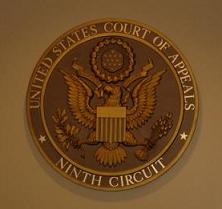Family Limited Partnership Does Not Meet Bona Fide Sale Exception
 This from WS+B’s Trust and Estate expert, Hal Terr:
This from WS+B’s Trust and Estate expert, Hal Terr:
In the Estate of Erma V. Jorgensen (CA 9 5/4/2011), the Court of Appeals for the Ninth Circuit upheld the Tax Court’s decision and determined that the marketable securities the decedent transferred to two separate family limited partnerships (FLPs) were includible in her estate under IRC Code Section 2036. In its decision, the Ninth Circuit noted that “transfers to family limited partnerships such as this are subject to heightened scrutiny, and, to be bona fide, must objectively demonstrate a legitimate and significant nontax reasons for the transfers.” The Ninth Circuit agreed with the Tax Court’s decision that the “bona fide sale” exception did not apply to the gifts of partnership interests since there was no valid business purpose for the FLPs. In addition, the Court concluded that there was an implied agreement at the time of the transfers that the decedent would retain the economic benefits of the property, even if the retained rights were not legally enforceable.
Ms. Jorgensen was a resident of California when she passed away on April 25, 2002. Prior to her death, Ms. Jorgensen established two FLPs and funded with marketable securities. Ms. Jorgensen made gifts of the limited partner interests to her children and grandchildren, and although the value of the gifts exceeded the then available annual exclusion of $10,000, she did not file any gift tax returns for these transfers. A letter from Ms. Jorgensen’s attorney stated that the “purpose of the partnership formations was the hopefully the partnerships will qualify for the 35% discount.” Neither partnership operated a business. The management of the FLPs underlying marketable securities were not active. In addition, Ms. Jorgensen wrote personal checks on the partnership accounts and the estate tax liability for Ms. Jorgensen’s estate was paid from funds from the FLPs.
Under IRC Section 2036(a)(1), an individual’s gross estate includes property he or she transfers during their lifetime if he or she retained for life the possession or enjoyment of the property or the right to the income from the property. This requirement is met if there is an implied agreement among the parties to the transaction at the time of transfer that the transferor may retain the possession or enjoyment of, or the right to the income from, the transferred property.
The Ninth Circuit disagreed with the estate’s position that the personal checks written on the accounts of the partnerships were de minimis stating “we do not find it de minimis that the decedent personally wrote over $90,000 in checks on the accounts post-transfer, and the partnerships paid over $200,000 of her personal estate taxes from partnership funds.”
From prior case law, some of the guidelines that help meet the bona-fide exception for transfer of FLP interests are as follows:
Create the FLP using a valid written agreement under state law. (Estate of Kimbell v. United States, 91 AFTR 2d, 585);
- Document the non-tax reasons for establishing the partnership;
- Separate partnership assets from personal assets. Clients should attain a separate tax identification number for the partnership, establish a separate bank account for the FLP, and maintain proper books and records. (Estate of Harper v. Commissioner, 83 TCM 164);
- Transfer the title of assets contributed to the FLP as soon as reasonably possible. (Estate of Harper v. Commissioner, 83 TCM 1641);
- Do not contribute the bulk of the transferor’s assets to the FLP. Personal residences, automobiles and other personal items should not be used for funding an FLP. (Estate of Strangi v. Commissioner, 85 TCM 1331);
- The general partner(s) should manage the FLP pursuant to their fiduciary duty mandated under state law. Generally the investment philosophy of the FLP should not mimic that of the general partner. (Estate of Kimbell v. United States, 91 AFTR 2d, 585);
- Make sure all distributions from the FLP are performed on a pro-rata basis as outlined in the partnership operating agreement. (Estate of Thompson v. Commissioner, 84 TCM 374);
- Engage in transactions with non-related parties, rather than exclusively with family members. (Estate of Thompson v. Commissioner, 84 TCM 374);
- Ensure that the FLP will be a going concern after the death of the original partner.
In the current case, we learn that the mere funding of the partnership with long held marketable securities will not overcome the “bona fide sale” exception. There should be some active management of the marketable securities transferred and input should be received from the other partners of the FLPs on the investment of partnership funds. In addition, the Courts are finding that the payment of decedent’s estate tax from partnership funds implies that the decedent had full control of the partnership’s underlying assets and as such, never surrendered the use, enjoyment and possession of the assets.

